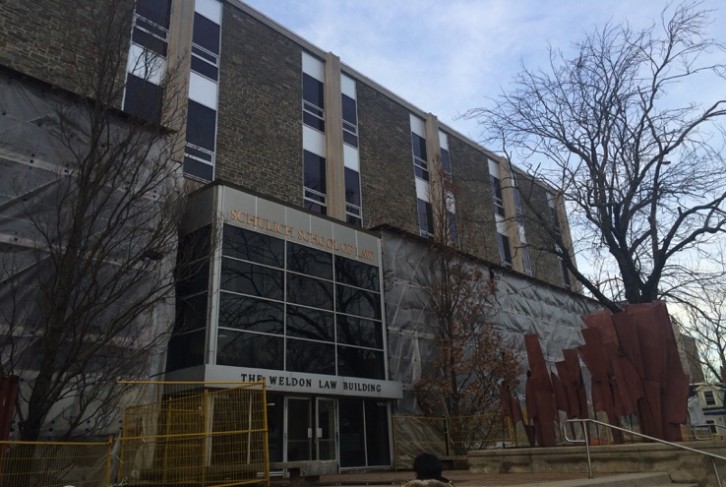Environmental racism
Dal professor sheds light on environmental racism in Nova Scotia
Projects are 'devastating indigenous lands and communities'

caption
Dalhousie's Schulich School of Law was the site of the panel discussion on environmental racism.
caption
Dalhousie’s Schulich School of Law was the site of the panel discussion on environmental racism.Ingrid Waldron says the fight against environmental racism in Nova Scotia is not over.
Waldron has been researching the impact of the racialization of space on marginalized groups for more than five years with her project group ENRICH (Environmental Noxiousness, Racial Inequities and Community Health).
“Resource extractive development projects in mining, forestry and oil and gas development projects are devastating indigenous lands and communities without governments or corporations obtaining free, prior, and informed consent from these communities,” Waldron said at a panel discussion Tuesday.
The panel was hosted by the East Coast Environmental Law Association (ECELAW) and the Schulich School of Law to educate the public on the disproportionate health burdens that communities, predominately Mi’kmaq and African-Nova Scotian communities, located near toxic sites experience.
“Canadian studies have long shown that there is elevated risk of various diseases in communities exposed to the chemicals that are present in polluted communities like rare forms of cancer, upper respiratory problems, skin diseases and allergies,” said Waldron, an assistant professor at the Dalhousie School of Nursing.
The residents of Lincolnville, N.S., have been lobbying for the removal of a dump in their area for years. Residents have reported high rates of cancer and say that’s due to their proximity to the dump.
A series of studies conducted by the ENRICH project examine the relationships between race, place and power, and look at the health problems associated with different living conditions.
“We will need to see structural changes made to the law and decision-making frameworks” said Aaron Ward, executive director of ECELAW. “A good start would be the federal and provincial environmental bills of rights that are informed by and incorporate environmental justice principles.”
The two environmental advocacy groups, ENRICH and ECELAW, lobbied for Bill 111, the Environmental Racism Prevention Act that was debated in the Nova Scotia legislature on Nov. 25.
“Bill 111 was created to require government representatives to come down and consult with community members,” said Waldron, “ensuring that health is central in the process and that communities are central, because those are not considerations that have been priorities for government.”
Waldron said that the bill’s defeat does not signal the end of it. She plans to review and rework it, and push for it to be presented in the house this spring.
The map below, created by the ENRICH project, shows the proximity of marginalized communities to toxic environments in Nova Scotia.

